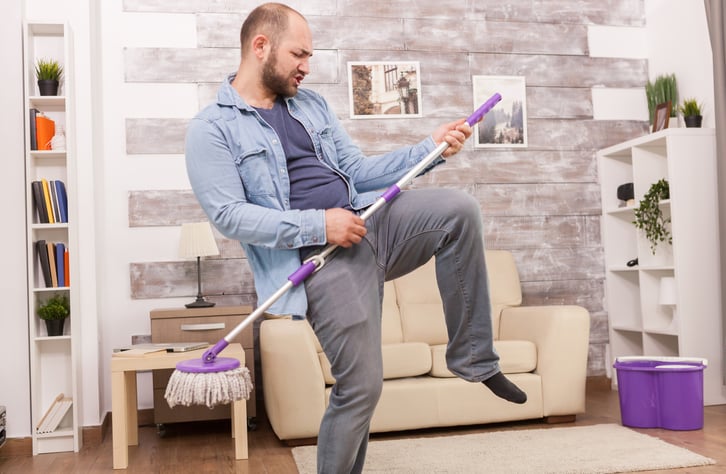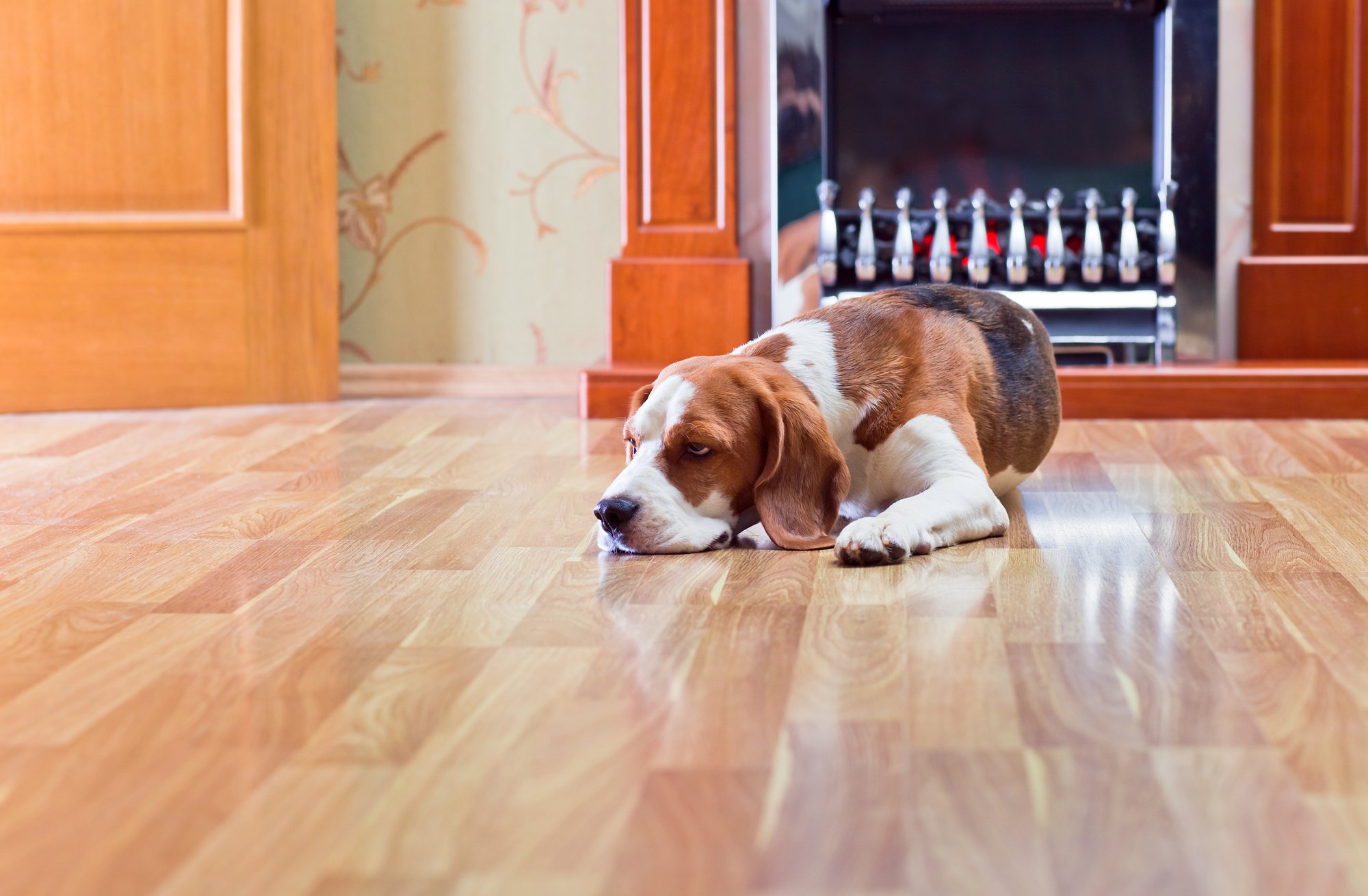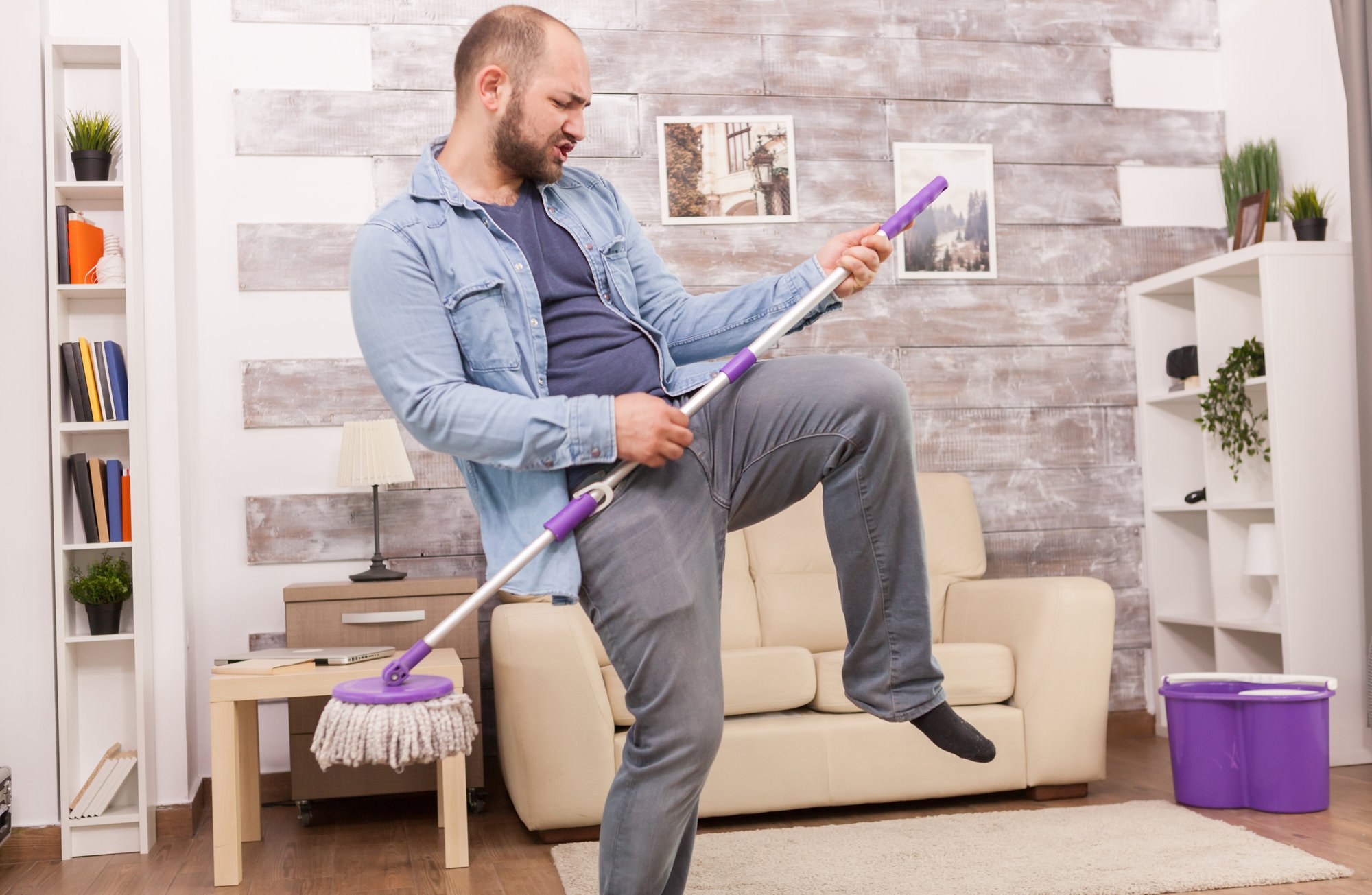Updated November 30, 2022.
Wood floors are timelessly stylish and durable. This is what makes them popular with renters, rental property owners, and homeowners alike in the Baltimore area! However, as hardy as they are, wood floors can suffer wear and tear over time—especially when not cared for properly.
Unfortunately, renters won’t care for your wood floors as well as you would if you lived in your Baltimore rental homes. They’ll move furniture around without the benefit of those chair-sock thingies, causing costly damage that will require refinishing later.
The best way to avoid this is to equip your renters with the information and resources they need on how to care for wood floors as though they were their own! That said, even after you've dispensed this priceless knowledge on world-class floor care, you should also take precautions to protect against damage—just in case your renters don’t listen to your wood-based wisdom.
Consider the following tips from the experts in Baltimore property management to minimize damage and maximize the benefits of those beautiful floors!
Put It in the Lease
Your lease is your best protection against shenanigans, so make it count. Add a lease addendum that covers wood floor maintenance. This will show the renters that your wood floors are important to you—and to them, if they don't want to get busted for floor negligence.
This section should include information on how often to clean the floors and the type of cleaning materials to use. Here are some tips that you can add to this part of the lease agreement to protect your beautiful Baltimore boards!
Cleaning Frequency
A small family might need to vacuum (yes, you can vacuum a hardwood floor) a handful of times a month, especially if they have pets, while a single person or a professional couple can get away with vacuuming once a month. Encourage your renters to avoid using the beater bar attachment of the vacuum cleaner and use a soft one instead to avoid damaging the floors.
If your renters happen to use a dust mop or something even more 'archaic' (think BROOMS), recommend 'high-tech' models that won't scratch your heritage hardwoods that are specifically designed for the job.
Cleaning Efficiency
When vacuuming, the renter must remove floor mats and vacuum under rugs (if they have any, we're not judging floor décor styles, here). When mopping, it’s important to completely wipe up any water: standing water is like Kryptonite to wood. It can leave spots, seep in between boards, and even cause the wood to warp and dull the finish. That's not classy.
Avoiding Damage
-
Make it clear that commercial floor cleaners are out of the question, as most of them aren’t made with wood maintenance in mind.
-
Rather, make a gentle DIY cleanser that’s effective at removing dirt, and include the recipe for it in the cleaning instructions.
-
Alternatively, make a list of brands that make natural wood floor cleaners in case your renter isn’t the crafty type and ready to post a picture of mopping the floors on insta.
-
Make sure that your wood floors aren’t exposed to direct sunlight for prolonged periods of time. Just like you would protect your skin with sunscreen, placing rugs on spots that get the most sun exposure will prevent them from early-onset aging.
-
You can also encourage your renters to recreate their favorite scene from 'Interview with the Vampire' by blocking the sun out with shades or curtains during peak sunlight hours.
-
Asking your renter to clip their pets' nails regularly also reduces the amount of visible wear on wood floors, and encouraging them to get a couple of pairs of the chair socks we mentioned earlier also works wonders.
It's also worth your time to get an AC contractor to check the HVAC and make sure that it’s working properly (or have your Baltimore property management team handle it). If it is, then half the battle with moisture build-up is already won!
Damage Control
Experienced property managers in Baltimore will also say that if the renter has kids or pets, then stains are practically unavoidable. The least harmful tools that you can use to get rid of stains on wood floors include acetone, rubbing alcohol (aka Isopropyl alcohol), and hydrogen peroxide.
-
Rubbing alcohol is great at removing wine and juice stains: all you have to do is dab the stain with a soft cloth that has been dampened with this miracle liquid. Rubbing alcohol can also be used for disinfecting wood floors—and it dries fast, so the solution won’t sit on the floor and leave marks.
-
Acetone is another commonly-used removal agent for lacquer and paint stains (think old nail polish remover solution), and you can also dab it onto the wood gently with a rag.
-
Hydrogen peroxide is the go-to for urine stains—and it’s important to use it as soon as the stain happens, as it could blacken the wood. All you have to do is dampen a rag with the hydrogen peroxide and leave it on the stain for a couple of hours.
We recommend spot-testing the above solutions in a small area first before encouraging your Baltimore-area renters to go all out on their floors. This could lead to a misunderstanding—and a hefty bill for damages that you unintentionally authorized.
Equip Them Well
A popular gift that keeps on giving is to provide your renters with picture hanging strips and protectors for table chairs and barstools as a welcome present. These will keep your walls and floors protected no matter how often your renter moves things around.
You should also encourage your renter to wipe any chair-foot protectors off regularly to remove grit that could cause wear over time.
Do Your Part
Let’s face it; the chances of renters caring for the wood floors in your Baltimore rental property as well as you would are slim. Even if you give them all of this information, they’ll apply maybe 50% of it.
-
If you want peace of mind, cover your wood floors with rugs—especially in high traffic areas such as the kitchen. Rugs catch the grit that causes wear. Also, prepare to buff and recoat the floors at least once every two or three years.
-
Before the renter moves in, take photos of the property—especially the floors. That way, if damage occurs that must be repaired with their deposit funds, you have proof of how the floors looked before they moved in.
Screen Your Renters
Thorough tenant screening is a must if you want to find responsible renters who will care for your wood floors. Make sure to check their credit score and criminal record for crimes against flooring. This will tell you all you need to know about their level of responsibility.
Jokes aside, when it comes to the tenant placement process, we recommend you leave this in the hands of a skilled Baltimore property management team. You'd be surprised how easy it is to run afoul of the law with your screening practices!
Get Help for Those Hardwoods
If this sounds like a lot of work, that’s because it is!
-
You'll need to interview and screen renters to make sure that they’re the responsible type.
-
You'll have to draft a whole 'Wood Maintenance Manual' to include in your lease.
-
You'll be doing the work of taking photos of the property before your renters move in.
All of this takes time and effort! If you’d rather be focused on building your portfolio and securing your retirement, work with full-service property management to stay on top of these sorts of details!
Check out our Rentwell Onerate™ to see the kind of services you could benefit from with affordable, flat-rate pricing. Contact us today to get started.











